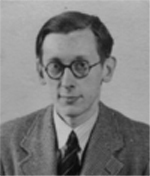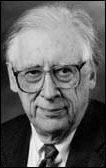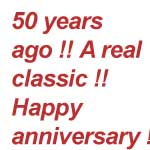



Pople in the early 1950s Photo courtesy © G.G. Hall |
John Anthony Pople was born in 1925 in England.
His primary interests before and during his undergraduate work
in post-war Britain was in mathematics.
He obtained his Ph.D.at Cambridge University,
UK, in 1950 working with
Lennard-Jones
on valence theory, in particular applications to the water molecule.
His thesis dealt with many aspects of water,
including its response properties and bonding structures. Pople had moved to Carnegie-Mellon University in Pittsburgh, PA, in 1958 and in 1986 he went to Northwestern University in Chicago, IL. Pople's first major contribution was a theory of approximate MO calculations on pi-electron systems, similar/identical to the one developed by Rudolph Pariser and Robert G. Parr, Subsequently, he developed the methods of Complete Neglect of Differential Overlap (CNDO) and Intermediate Neglect of Differential Overlap (INDO), before moving to computations using Gaussians. Pople received the Nobel Prize in Chemistry in 1998. ... [some more CV details] on this page here ... and furthermore : Pople's autobiography may be found under the Nobel Foundation. |
 Pople in the late 1990s
Pople in the late 1990sPhoto originates from here |
|
John A. Pople : The Origin of PPP Theory. Int. J. Quant. Chem, 37, 349-354 (1990). John A. Pople : List of Publications 1950-1989. Int. J. Quant. Chem, 37, 355-371 (1990). |

|
John A. Pople : Electron Interaction in Unsaturated Hydrocarbons. Trans. Faraday Soc. 49, 1375-1385 (1953). |
View it!
|
| For a finely differentiating and very thoughtful comment on
the Nobel Prize of 1998 (Pople/Kohn, DFT) you should read the following
article by Kutzelnigg. It is unfortunately still in German. To really esteem the article get hold of a person who understands German fairly well and listen to the subtle sounds!Click here! |
